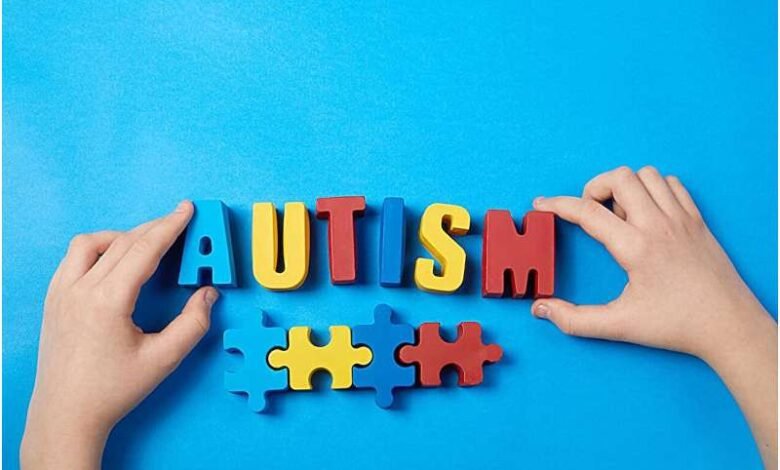Can Autism Be Cured? A deep dive into Myths, Evidence-based therapies, and the science behind them.

Autism Spectrum Disorder (ASD) is a subject of discussion in the medical, educational as well as social networks. The number of people diagnosed with autism is increasing across the world, one most parents as well as caregivers and educators are still asking is can autism be treated?
This issue, although reasonable, is rooted in the common misconception of what exactly autism is. To understand autism in its entirety you must consider autism using a modern scientific lens that considers its causes, nature and the variety of support options available.
What Is Autism?
Autism is a neurological condition and is not an illness. It impacts how people perceive the world and interact with other people as well as process data. These changes are evident at an early age and persist throughout a person’s life, however, they can be different as the individual gets older.
Common signs of autism are:
- Problems with social interaction and communication
- A lot of repetitive behaviors or a focussed interest
- Sensitivities to sensory stimuli (to light sounds or textures, etc.)
“Spectrum” is a term used to describe a range of abilities “spectrum” is used because symptoms and abilities can vary widely. Some people aren’t verbal and require 24/7 care while others are independent or attend college and are able to pursue careers.
The Scientific Answer: No, Autism Cannot Be Cured
There is currently no solution for people suffering from autism. This isn’t due to the lack of effort or effort, but rather because autism isn’t an incurable disease as such. It is thought to be the result of a mix of environmental and genetic elements that influence the development of the brain.
Initiatives attempt to “cure” autism have largely been rejected by the medical and scientific communities, in favor of managing of support, accommodation, and treatment. The focus has been shifted to neurodiversity, the understanding that differences in neurological functioning that include autism are natural variations in humans’ brain.
Therapies and Treatments That Help
Although autism isn’t curable however, a range of treatments and educational interventions can assist people with autism lead healthy, independent and joyful lives.
1. Applied Behavior Analysis (ABA)
ABA is among the most researched treatments for autism. It employs structured methods to help teach communication and behavior skills and decrease behaviors that inhibit learning or social interaction.
2. Speech and Language Therapy
This can help people who are having difficulty speaking or comprehending the language, and helps improve verbal and non-verbal communication abilities.
3. Occupational Therapy
OT aids in the development of your motor and sensory skills and the ability to complete everyday tasks such as eating, dressing writing, or eating.
4. Social Skills Training
Programming that teaches the importance of eye contact and turn taking and recognizing social cues are essential especially for children of school age and teenagers.
5. Parent Training and Support
The ability to empower caregivers with strategies to assist their children at home as well as within the local community are crucial to ensure long-term success.
Medications: Addressing Symptoms, Not the Cause
There are no drugs that will cure autism, but certain drugs can help with managing specific signs or conditions such as:
- Anxiety
- Attention Deficit Hyperactivity Disorder (ADHD)
- Agression or extreme irritability
- Depression
- Seizure disorders
The medications prescribed are according to the needs of the person However, they do not change the condition that causes autism.
Harmful Myths About “Cures”
However, certain treatments and products are advertised to be“autism “cures.” These include:
- Chelation treatment (removal of metals that are heavy from your body)
- Miracle Mineral Solution (MMS) (a dangerous bleach-like substance)
- Hyperbaric oxygen chambers
- Excessive dietary restrictions, without medical supervision
These methods that aren’t scientifically proven and could be physically harmful or even exploit vulnerable families. It is best to consult with licensed professionals and reliable sources when considering methods.
Embracing Neurodiversity
In recent years, a lot of individuals with autism as well as their family members have been advocating for a fresh view: instead of looking to “fix” autism, society should be focusing on acceptance, accommodations, and inclusion.
This new mindset is a way of valuing autistic people for who they are, and recognizes the fact that autism has both difficulties and strengths, such as a keen eye for particulars, unique problem-solving abilities and the ability to think creatively.
So, What’s the Goal?
The objective is not to eradicate autism, but rather to:
- Enhance the your quality of life
- Increase independence and increase communication
- Develop meaningful relationships
- Make sure that everyone has the accessibility to education, work and community activities
Through early intervention, encouragement and understanding, many autistic people go on to lead meaningful and fulfilling lives.
Final Thoughts
Autism isn’t curable however it doesn’t have to be to be. Autism is a permanent aspect of one’s identity. Instead of looking for the cure, we must concentrate to understand, acceptance and care. Science shows that with the right strategies–particularly early in life–people with autism can develop vital skills and achieve independence and fulfillment.
No matter if you’re a teacher, parent or caregiver, or looking to find out more about autism, remember that it isn’t a thing to be afraid of, it’s a fact to be aware of.



